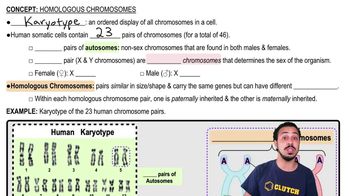Which of the following correctly ranks the structures in order of size, from largest to smallest?
a. Gene–Chromosome–Nucleotide–Codon
b. Chromosome–Gene–Codon–Nucleotide
c. Nucleotide–Chromosome–Gene–Codon
d. Chromosome–Nucleotide–Gene–Codon
 Verified step by step guidance
Verified step by step guidance Verified video answer for a similar problem:
Verified video answer for a similar problem:

